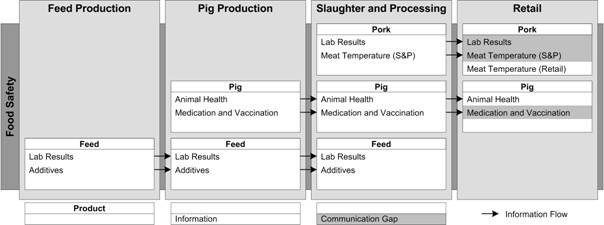Information systems
To guarantee food safety as required by EU and national law and private regulation (see chapter 5), any source of problems with food must be traceable. To be able to trace problems back to their source, information systems are needed to store and process all information needed for that purpose. Information systems preferable should be computer systems, but can also be systems using paper documents or other forms of data storage.
The EU regulates mainly traceability between actors in a supply chain. Actors are relatively free to organise traceability within their respective organisations. This means that information exchange between actors is mainly supportive of the (direct) exchange relation.
Large differences exist between the various supply chains in the EU with respect to solutions created for traceability. Such differences can be observed when studying the three example cases VIONFood Group, Ham of Bayonne, and Eichenhof. We show both information exchange between actors in the supply chain as well as information systems used inside companies in the chain.
In a recent report by Lehmann et al. (2010), based on the Q-Porkchains inventory of EU supply chains, a reference model of information supply has been made of EU pork production, which presents a more or less ideal situation. This model contains food safety information as well as information for traceability, logistics, quality and sustainability.
